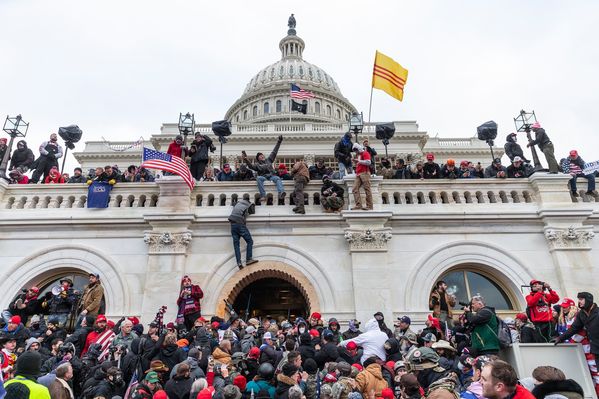Insurrection at the Capitol: An Attack on Democracy

January 19, 2021
On Wednesday, January 6, our country witnessed, in the most objective terms, a dangerous riot assaulting the Capitol Building. It all started early Wednesday morning, when President Donald Trump held a rally in Washington D.C. Members of his family and campaign officials spoke to a large crowd in anticipation of President Trump’s appearance, all continuing the accusations of a “fraudulent election.” When he finally took the stage, President Trump cast doubt over the election results and destabilized faith in the process. President Trump cited unconfirmed statistics, just as he had been doing since the 2020 presidential election predictions came out, to support his theory.
However, there was an additional rhetoric point folded into the rally as President Trump was urging his supporters to not only protest the results, but physically contest them. A few hours later a joint session between the Senate and the House of Representatives would meet to certify the 2020 presidential election results. Trump concluded his speech triumphantly saying that he would march with the protesters to the Capitol, then retreated back to the White House.
The emboldened supporters marched down Pennsylvania Avenue and arrived at the Capitol, amassing in large groups on both the east and west ends of the building. Tensions steadily grew between protestors and the small force of Capitol Police in charge of security. Protestors clashed with policemen, scaling scaffolding constructed for President-Elect Joe Biden’s inauguration. Within the hour, the protestors turned into rioters, smashing windows and storming the Capitol Building. Lawmakers were forced to flee and were led to undisclosed locations while a small Capitol Police force attempted to fend off the rioters. In the process, one rioter was shot and would later die after attempting to breach a room held by police. A police officer would also die due to injuries incurred during the insurrection.
After the Congressmen were safely away, the Capitol Building was left to the mercy of the rioters. They vandalized the Senate chambers, stealing documents and posing for selfies in the chair where Senate Majority Leader Mitch McConnell had sat moments before as the Senate had begun to certify the election. Acting like crazed tourists, rioters posed for photos with statues, confederate flags in hand. Others touted symbols of the right-wing conspiracy organization QAnon. Some managed to reach key lawmakers offices, defacing them and leaving threats on their desks and written on doors. It would take nearly three more hours for reinforcements to arrive and begin clearing the building. Once the building was declared safe, lawmakers returned to restart the election certification process. At around 4 am, the process was complete and Joe Biden was officially elected as the next president of the United States.
The insurrection left the country stunned, demanding answers to a myriad of questions. Why wasn’t there more security? How could such an important government building be breached so easily? Why did it take so long for reinforcements to arrive? Why didn’t our president step in and discourage the attackers? And perhaps most compelling of all – Is our president fit to run this country?

